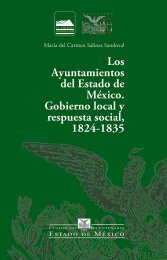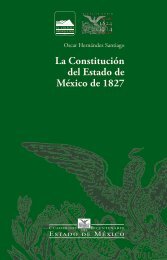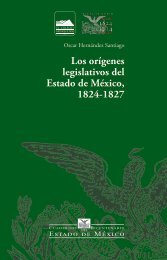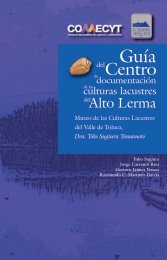You also want an ePaper? Increase the reach of your titles
YUMPU automatically turns print PDFs into web optimized ePapers that Google loves.
KORPUS <strong>21</strong>, VOL. 2, NÚM. 4, 20<strong>21</strong>, 179-200<br />
The Sanborns Waitress Uniforms<br />
From the moment that Sanborns moved<br />
into the House of Tiles, the uniforms worn<br />
by Sanborns waitresses became important<br />
visual markers used by social commentators<br />
to describe the boundaries separating the<br />
gender, c<strong>las</strong>s, and race positions between<br />
upper-c<strong>las</strong>s guests and the working-women<br />
who served them. In 1919, the Mexican writer<br />
Armando de Maria y Campos described<br />
Sanborns as a “lordly mansion” filled with<br />
distinguished guests packed together in<br />
cloth-lined booths being served by young<br />
Sanborns waitresses. “In the midst of the<br />
atmosphere of originality and good taste,<br />
it is shocking that the lady waitresses are<br />
uniformed in those insipid and discolored<br />
gowns”, he said. De Maria y Campos joked<br />
that Sanborns managers should instead<br />
dress them like pajecillos (servants for the<br />
king), “with stockings striped with red or<br />
white, gold or green, and colorful wigs” (de<br />
María y Campos, 1919). In 1924, Salvador<br />
Novo lamented his displeasure for some of<br />
the physical changes that Sanborns made to<br />
the House of Tiles. He deplored the addition<br />
of a g<strong>las</strong>s ceiling, the chessboard floor tiles,<br />
the paintings of peacocks on the walls, and<br />
the “wet nurse uniforms of those who serve<br />
us the medicinal ice creams” (Novo, 1924:<br />
33). These forms of social criticism linked<br />
the presence and physical appearance of<br />
working-c<strong>las</strong>s female employees among the<br />
scenery and the modernist transformations<br />
found inside the store. They also show that<br />
the uniforms worn by Sanborns waitresses<br />
became identifiable symbols representing<br />
the company.<br />
Beginning in the 1930s, Sanborns directors<br />
systematically adjusted their business<br />
to evolve within Mexico’s changing economic<br />
conditions and the intense wave<br />
of nationalism that followed the Mexican<br />
Revolution (1910-1920). Sanborns directors<br />
Mexicanized their stores to increase their<br />
customer base beyond local elites and to<br />
promote foreign tourism (Chrisman, 2018:<br />
132). Some of the changes made to the<br />
stores in Mexico City and Monterrey included<br />
Mexican artwork and upholstery, restaurant<br />
menu items that featured corn dishes<br />
associated with Mexico’s national cuisine,<br />
and a redesigned folkloric uniform which<br />
mixed together a selected appropriation of<br />
gendered clothing worn by indigenous women<br />
in Mexico.<br />
According to a Sanborns manager (Gudiño,<br />
2015), inspiration for the new uniforms<br />
was drawn from the clothing typically worn<br />
by indigenous women in states that were,<br />
“the most generally representative of Mexico”.<br />
The uniform consisted of three parts<br />
that included the huipil de mezcla, the traditional<br />
blouse from Puebla, a “modern, bright<br />
and comfortable” long striped skirt known<br />
as amarres from Oaxaca, and the cap from<br />
Nayarit. This highly selective amalgamation<br />
of indigenous dress used for the Sanborns<br />
uniform shares interesting similarities<br />
with the choice of clothing used in other<br />
largescale cultural projects of Indigenismo<br />
and Mestizaje in postrevolutionary Mexico.<br />
As Natasha Varner (2020: 10) shows, this<br />
choice of clothing held a set of codes and<br />
characteristics that defined what it meant<br />
to be an “authentic” indigenous woman.<br />
Photo 1<br />
A Sanborns waitress attends a group of<br />
men in the tea salon at the House of Tiles.<br />
Source: AGN (s.f.).<br />
Foreign visitors may have recognized the<br />
uniforms as tropes representing Mexico’s<br />
indigeneity. One U.S. traveler described a<br />
scene within the House of Tiles, which con-<br />
187



![bicentenario_1[V2]](https://img.yumpu.com/68677971/1/167x260/bicentenario-1v2.jpg?quality=85)









![El_primer_federalismoEM[final]_compressed (2)](https://img.yumpu.com/68483279/1/178x260/el-primer-federalismoemfinal-compressed-2.jpg?quality=85)



